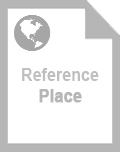Revenue Ensign - Flag of the United States Customs Service
Title:
Revenue Ensign - Flag of the United States Customs Service
Type:
Subject:
Description:
The Custom's service flag was designed by Secretary of the Treasury Oliver Wolcott, Alexander Hamilton’s successor, who used 16 alternating red and white vertical stripes, one stripe for each State that had joined the Union by 1799, with a bald eagle in the canton holding 3 arrows in his sinister claw and an olive branch in his dexter claw. On the left and right sides of the eagle are 4 stars each in an arc pattern, and above the eagle 5 stars. On the eagle is a crest representing the United States. Wolcott submitted his flag design to President John Adams in 1799 and the final version was approved on August 1st, 1799.
Nathaniel Hawthorne, who served as customs surveyor at the port of Salem, Massachusetts, from 1846 to 1849, suggested the "stripes turned vertically, not horizontally, indicated a civil, not military, post of Uncle Sam’s government."
Although originally intended as a marine ensign to be flown from revenue cutters and customs vessels, the collectors soon were flying it over their customhouses. That tradition was codified a half-century later, when in 1874, Treasury Secretary William A. Richardson, required that during business hours, the customs ensign was to be hoisted by the side of the Stars and Stripes over all customhouses.
From Wikipedia:
The flag of the Customs Service was designed in 1799 by Secretary of the Treasury Oliver Wolcott, Jr. and consists of 16 vertical red and white stripes with a coat of arms depicted in blue on the white canton. The original design had the Customs Service seal that was an eagle with three arrows in his left talon, an olive branch in his right and surrounded by an arc of 13 stars. In 1951, this was changed to the eagle depicted on the Great Seal of the United States.
Its actual name is the Revenue Ensign, as it was flown by ships of the Revenue Cutter Service, later the Coast Guard, and at customs houses.
Nathaniel Hawthorne, who served as customs surveyor at the port of Salem, Massachusetts, from 1846 to 1849, suggested the "stripes turned vertically, not horizontally, indicated a civil, not military, post of Uncle Sam’s government."
Although originally intended as a marine ensign to be flown from revenue cutters and customs vessels, the collectors soon were flying it over their customhouses. That tradition was codified a half-century later, when in 1874, Treasury Secretary William A. Richardson, required that during business hours, the customs ensign was to be hoisted by the side of the Stars and Stripes over all customhouses.
From Wikipedia:
The flag of the Customs Service was designed in 1799 by Secretary of the Treasury Oliver Wolcott, Jr. and consists of 16 vertical red and white stripes with a coat of arms depicted in blue on the white canton. The original design had the Customs Service seal that was an eagle with three arrows in his left talon, an olive branch in his right and surrounded by an arc of 13 stars. In 1951, this was changed to the eagle depicted on the Great Seal of the United States.
Its actual name is the Revenue Ensign, as it was flown by ships of the Revenue Cutter Service, later the Coast Guard, and at customs houses.
Source:
SWHPL and
Wikipedia: https://en.wikipedia.org/wiki/United_States_Customs_Service
Wikipedia: https://en.wikipedia.org/wiki/United_States_Customs_Service
Citation
“Revenue Ensign - Flag of the United States Customs Service,” Southwest Harbor Public Library, accessed November 22, 2024, https://demo.digitalarchive.us/items/show/9366.Item 13377





